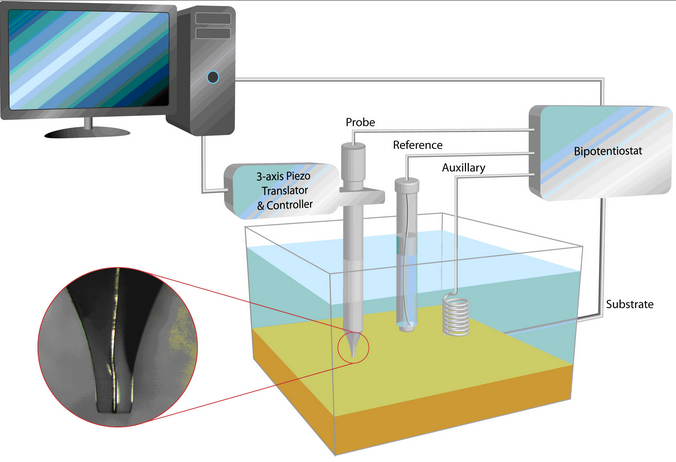Scanning Electrochemical Microscopy
SECM is another member of the SPM family. It works by measuring a current through an ultramicroelectrode held or scanned in a solution (containing electroactive species) in close proximity to a substrate surface. The substrate (e.g. biological material, polymers, glass etc.) perturbs the electrochemical response to the tip, and this perturbation provides information about the nature and properties of the substrate, particularly the local chemistry at a surface. With increasing miniaturisation of SECM probes it is important to control the probe design and structure particularly to develop nanoscale SECM probes, which have the potential for faster and more sensitive response down to less than 1000 molecules in favourable cases. Furthermore the interpretation of results from SECM alone can be difficult, especially when nanoprobes were used, as it is not possible to entirely separate the effects of chemistry and sample topography in the resulting data; to do so requires an independent measure of topography.

